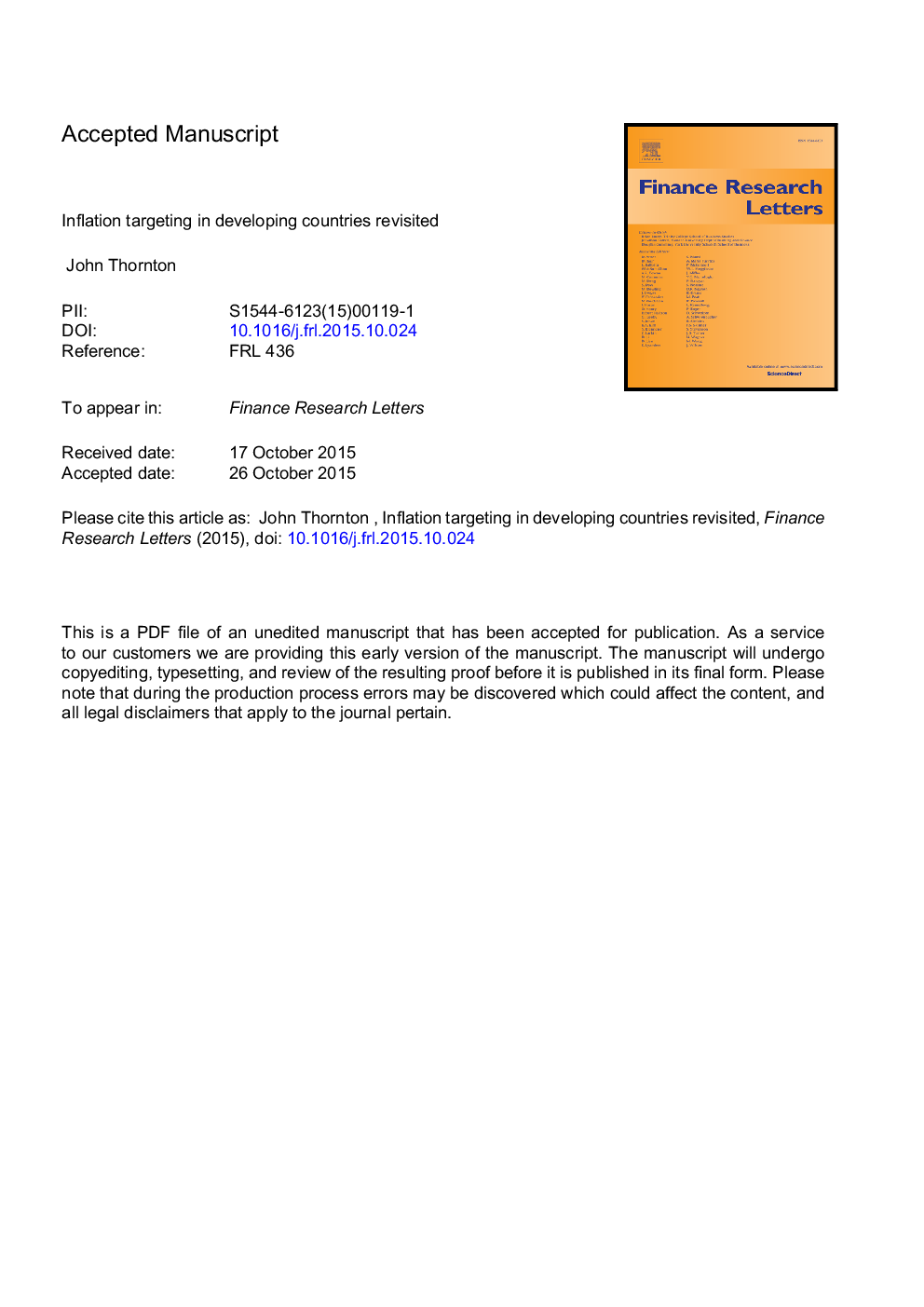| Article ID | Journal | Published Year | Pages | File Type |
|---|---|---|---|---|
| 5069457 | Finance Research Letters | 2016 | 17 Pages |
Abstract
In a recent paper, Gonçalvez and Salles (2008) (G-S) report that developing countries adopting the inflation targeting (IT) regime experienced greater drops in inflation and GDP growth volatility than non-inflation targeting developing countries. In this paper, I find that the G-S results do not hold up when their analytical framework is employed in the context of a more rational and larger sample of developing countries that controls for the comparability of monetary regimes as suggested by Ball (2010). In particular, adoption of an IT regime did not help reduce inflation and growth volatility in developing countries compared to the average experience with other monetary regimes and was no more advantageous in these regards than the adoption of a hard or crawling peg exchange rate regime. As such, the less technically demanding monetary regime of currency pegging remains an attractive regime option for policymakers in developing countries.
Related Topics
Social Sciences and Humanities
Economics, Econometrics and Finance
Economics and Econometrics
Authors
John Thornton,
